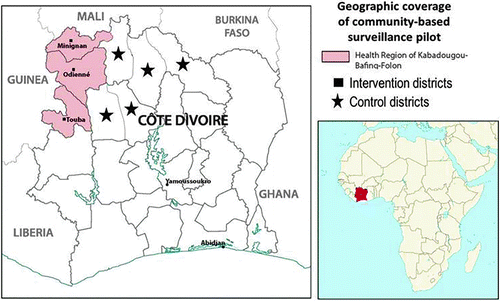Since the days of ancient Egypt, we’ve seen that organizations and societies want to acquire data. Modern technologies, though, are helping to displace “papyrus-based” data collection with more efficient alternatives as we move through new data collection phases.
Phase 1: In the Beginning There Was Paper Data Collection
Since the beginning , large and small organizations have relied on data collection using paper forms. Today, because of the technologies available to us, the field is beginning to undergo tremendous changes. In a sense, paper-based data collection was “Phase 1”: field workers carrying huge stacks of paper forms to the field in a process that was difficult and time-consuming.
Not to mention environmentally disastrous: ever think about how many trees have been sacrificed to get data for, ironically, environmental studies?
Unfortunately, paper-based data collection is still very, very common.
Phase 2: Replicating Our Paper Approach with Tech
Because of the hyper-successful introduction of mobile phones (really, mobile computers) to emerging countries, we’re now squarely in Phase 2: replacing the paper forms with electronic ones. While most data collection is stuck in the paper-based phase, tens of thousands of Magpi users worldwide are already in Phase 2 and going to the field as they always have, but with phones or tablets instead of paper. This is saving time, money, and boosting data quality.
Tools like Magpi make the process of creating electronic forms a free and simple process, and those forms can easily be deployed on anything from a $20 “dumb” phone to an iPad. But as the diagram below shows, Phase 2 is in most aspects just like Phase 1: it still requires trips to the field, but carrying a phone or tablet instead of a clipboard:
Phase 3: Hearing Directly from the Field, and Saving Ourselves the Trip
Now that many of the people we were previously interviewing at their homes or workplaces or clinics now have mobile phones of their own, each capable of using SMS and voice, if not more sophisticated apps, some Magpi users have begun incorporating Phase 3 into their work: having the people “in the field” transmit data themselves, instead of sending other people out to interview them.
By creating a completely new approach, this lets us do some things we simply couldn’t do before, like having health workers providing real-time birth registration via SMS. Or having thousands of field workers reporting in every day by SMS, without breaking the budget of the health ministry. And by making that kind of SMS system so easy and inexpensive, with two different kinds of SMS reporting, we’re unleashing the creativity of many people and organizations that could never have afforded this approach before.
Structured SMS
With structured SMS, simple data can be sent from even very simple phones, as in this case of CDC SMS-based “zero-reporting” of Ebola cases in West Africa:
Interactive SMS
With iSMS (interactive SMS), Magpi allows the collection of even very complex data, by SMS:
Crowdsourcing
With iSMS, it’s now even possible to use “crowdsourcing”: people can sign themselves up to contribute data to a Magpi form (in other Magpi uses, you need to know the list of data collectors and authorize them in advance):
And now, Magpi users can utilize voice data collection for the first time: Magpi now also allows IVR (interactive voice response) data collection – ideal for collecting data from less-literate populations (who may not be able to read SMS) via automated phone calls.
Moving to use field self-reports, in conjunction with more traditional approaches, takes imagination. Many people have told us, “oh, we’ve never done that kind of data collection before,” not realizing that NO ONE has done that before. The technology simply didn’t exist, or wasn’t in the hands of people in the far field. And what we’re seeing at Magpi is that the most imaginative of our users are realizing that this type of data collection can be more timely, more frequent, and at the same time much less expensive that before.
Phase 4: the Internet of Things (IoT)
To recap, many organizations are still in Phase 1 (paper), but more and more are moving to Phase 2 (electronic), and some are beginning to experiment with Phase 3 (self-reporting). We expect this co-existence of these phases to continue for years (we shouldn’t be surprised 20 years from now to find some organizations still using paper for data collection, sadly). However, we can already see another phase on the horizon: the “internet of things”, or machine reporting.
Magpi can now receive data from another computer system without another person being involved. That other system could be a sensor in a vaccine refrigerator that transmits a daily temperature reading, or sends an alert if the temperature goes out of range, or a computer at an industrial site, or an Android app inside a weather monitoring station:
Until recently this kind of integration could only be done using Magpi’s APIs (application programming interface) by a qualified programmer. Now, because of easy, programming-free integration tools like Zapier, anyone can connect Magpi with other systems easily and inexpensively.
We can hardly wait to see what people come up with!
Conclusion: the Future is a Mix
As newer technologies come on board, it’s not that older technologies immediately disappear: now we have gasoline-powered cars on the same highways as electric cars and, in a few cases, self-driving cars. People have a wide range of choices for transport, and so it is with the acquisition of data. We expect to see paper-based data collection continue for some organizations, while other embrace a mix of apps, SMS, voice and machine reporting.
Our job at Magpi is to make sure that all of those options are easy, accessible, and affordable for every organization.
Contact Magpi to Learn More
This post was originally posted in 2013, and has since been updated to include IVR and other features.












